Japanese Cuisine, Japanese Knife
How Sushi Chefs Prepare their Sushi Toppings
Sushi isn’t just about cutting the fish and placing it on top of a sushi rice. There is a delicate technique, the right utensils, and knowledge involved in making a god sushi. Let’s look at how professionals are making their sushi!
This post mainly talks about how to prepare a fish that has already been cut into a block suited for making sushi or sashimi.
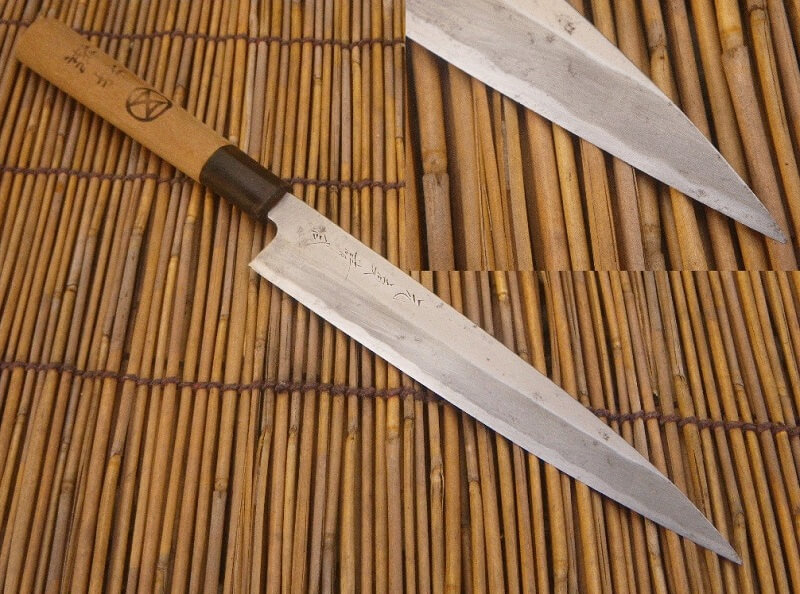
(Image: nihonauctions.com)
Making a good sushi begins from choosing the right knife.
The knife that is suited for sushi making is about 21 cm long, and should be a ‘Japanese Knife’. The kitchen knife that we generally use is called ‘ryouba’, which means that it is double edged. The traditional Japanese knife, however, is single-edged, and it is suited for slicing rather than cutting. This structure allows the user to slice off pieces without pressuring the ingredients, keeping the particles from breaking and umami from escaping. Because of its sharpness, it can also leave a certain gloss on the cross section of the fish that helps sushi look more appetizing.
You can also use your kitchen knife if it’s sharp enough, but since normal kitchen knife tends to take away the gloss and sometime even cause a rough or uneven surfaces, so knives such as ‘gyuto’ and ‘yanagiba’ are recommended.
How to cut the fish into a bite-size piece for sushi
Toppings on sushi is called ‘neta’. When you cut these neta from a fish block called ‘saku’, the first thing you have to be careful about is the direction of the tendons. In general, if you’re cutting from a large fish like tuna or swordfish, your knife should be intersecting the tendons in order to lessen the toughness and rough textures.
When you’re dealing with a smaller fish or fish with tendons that are already starting to fall apart, however, it is better to place your knife parallel to the tendons to get a clean peace. In this case, you don’t need to worry about the toughness of the tendons because they’re not as thick as those from the bigger fish.
Now to the actual cutting!
When you hold the knife, rest your index finger on the back of the knife (pretend that the tip of your knife is your finger!).
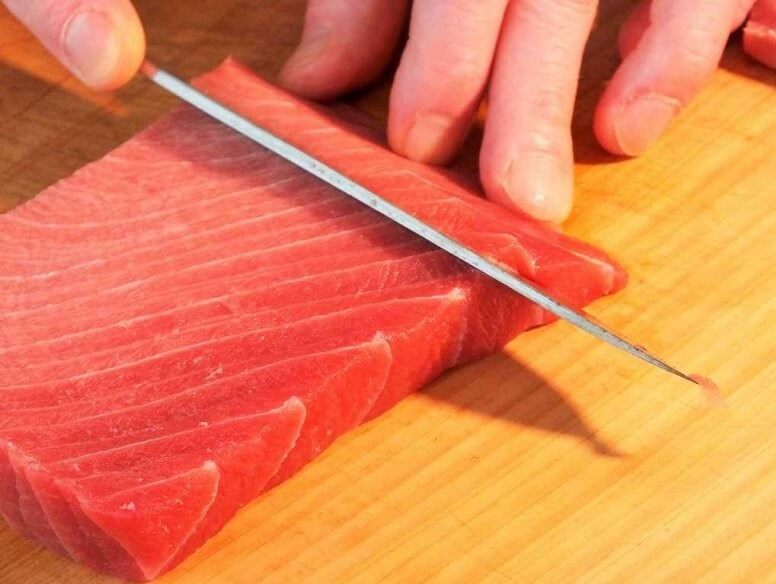
(Image: yamamatsu-suisan.jp)
Place the heel of the blade so that the thickness would be around 0.5mm for soft fish such as tuna, 0.2mm for tougher fish like sea bream, and pull the full length towards you. The knife should be slightly diagonal as shown in the picture.
At this point, please do not completely slice the piece off yet. Without pulling the knife back out, put it back into a vertical position, and cut off the piece. This is called ‘koba-gaeshi’. It’s not a must, but it’s a nice touch to make sushi look more appetizing.
Bonus: Choosing and Cutting Salmon and Tuna
Although the steps in making a sushi is similar between a lot of the toppings, how the chefs choose and prepare the fish can be slightly different depending on the sort of sushi they are making. Again, this isn’t a must, but it sure does add to the taste of your sushi.
For salmon
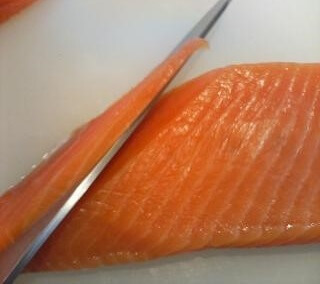
(Image: temaeitamae.jp)
- Look at the dark meat of the fish closely, if it looks dull, don’t choose this
- White, watery one isn’t the best choice either
- Choose the one with bright orange color, and dense meat
- Look out for a crack caused by extraction of bones
Sometimes it’s hard to cut salmon if it’s rich in fat. In that case, sprinkle some salt on the surfaces of the salmon. Wait for 10 minutes, wash the salt off with water, and wipe the water off. That should prevent the salmon from slipping on the cutting board (some chefs say that this process makes the salmon taste better too).
For salmon, cut the meat so that the knife is parallel to the tendons.
For tuna
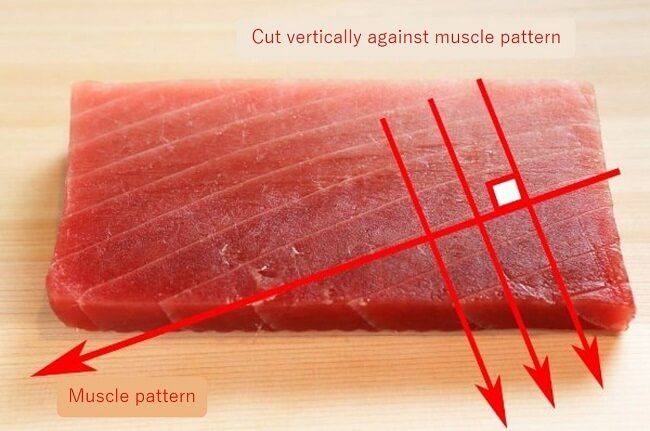
(Image: mi-journey.jp)
- Choose the one with less tendons
- If it’s frozen, try to find a spot that is slightly melted and check for any signs of discolor. Choose the one that looks bright red
- Try not to choose a small block so you won’t have to waste small bits and pieces
Be careful with any thick tendons, because the piece can create a crack if the knife gets stuck in between the cutting. If the tendons are starting to fall apart, put the knife in parallel to the tendons, but otherwise cut it so that the knife intersects the tendons.
There’s so much more to making a perfect sushi, so if you’re interested, please check out other pages on this blog!

Author - Kanna
A writing/translating enthusiast and a part-time illustrator, recently graduated from Sophia University. My expertise is in media and English studies, but I am also interested in a wide variety of fields, including traditions of art in Japan and how it has changed and been preserved. I hope people find interest in Japan through this blog!

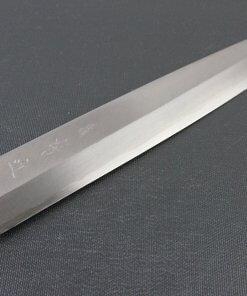
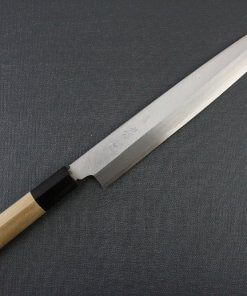
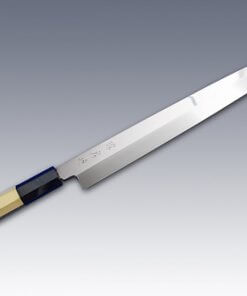
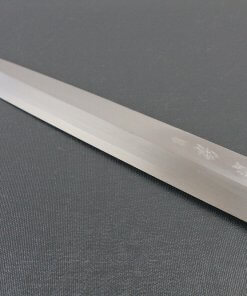
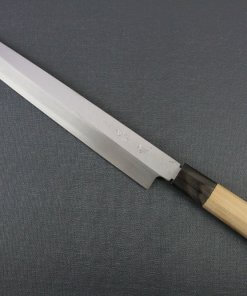
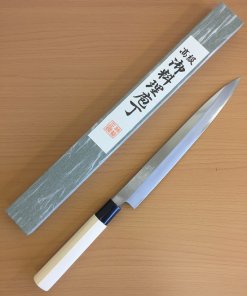
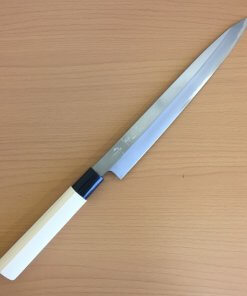
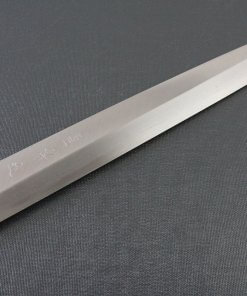
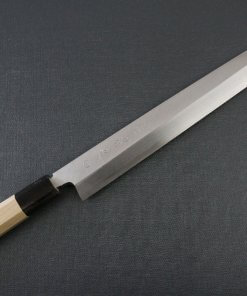
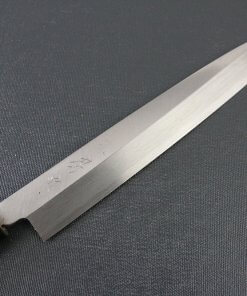
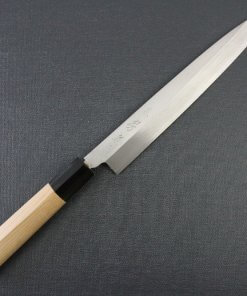
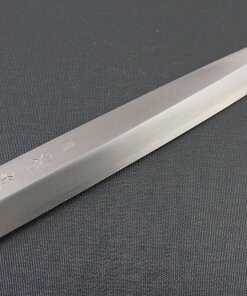
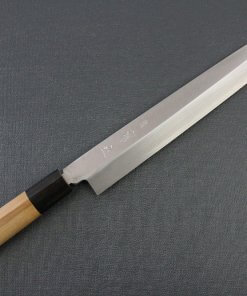
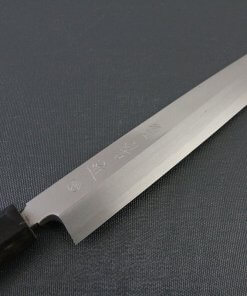
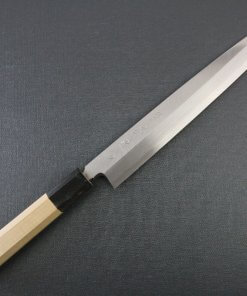
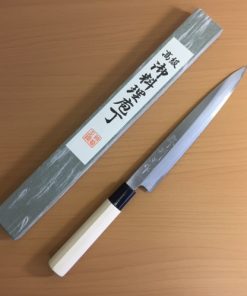
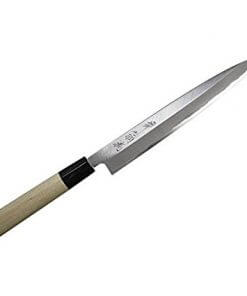
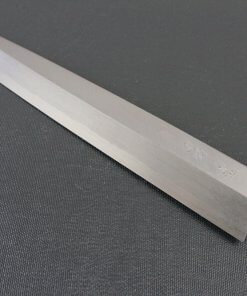
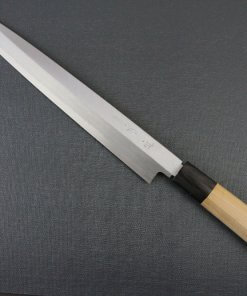
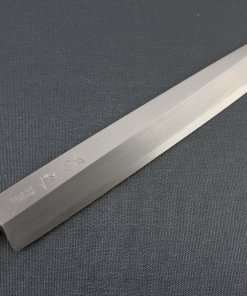
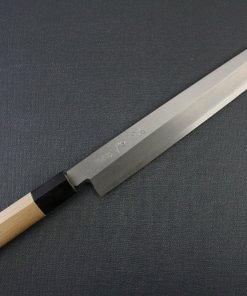
About Orientalsouls.com
Learn and Buy Japanese Craftsmanship, Tradition & Culture
OrientalSoul.com is the online shop where you can buy traditional crafts of Japan.
We only sell selected authentic products in which true spirits of Japanese craftsmanship exist.
You may be able to find similar products in other shops for lower prices. However, we sell products based on fair prices that worth labor and value of experienced craftsmen.
In addition, we introduce stories about product history, how a product is made, what makes it different from others, and how the product enriches your life!